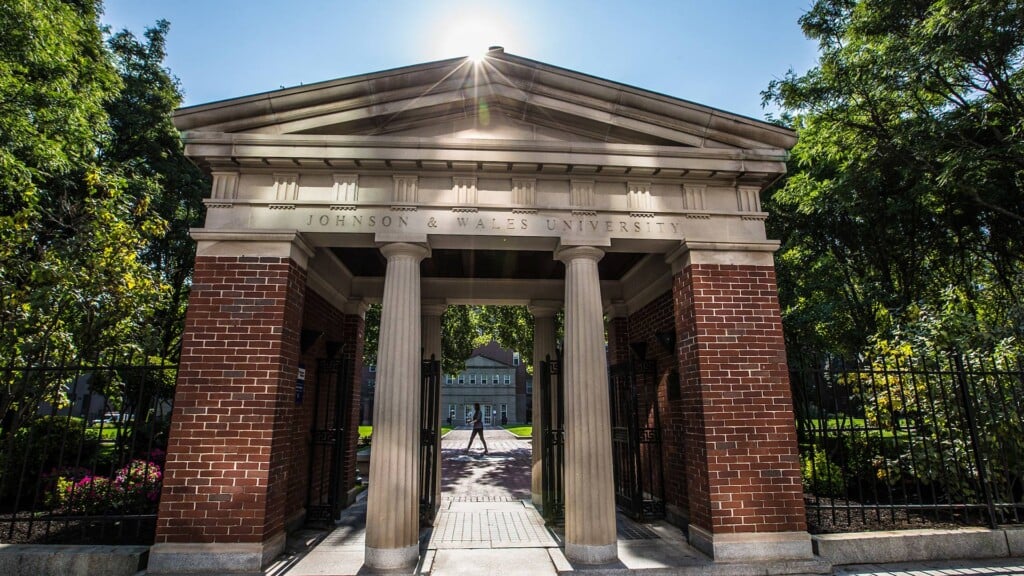The Chronicler
Filmmaker David Bettencourt recalls the making of his documentary, You Must Be This Tall: The Story of Rocky Point Park.
David Bettencourt knows the history of Rocky Point a little more than most: The filmmaker dove into hundreds of years of lore when making the movie You Must Be This Tall: The Story of Rocky Point Park, spent many a summer at the park as a child, and penned two books about the site for Arcadia Publishing.
So what better place to talk about his reasons for making the movie than at Rocky Point State Park? I joined him one windy afternoon for a walk around the perimeter to find out how he gained access to the shuttered park, his creative inspiration and how he caught a wicked case of “Palladium lung” while capturing footage for the film.
Are these the famous Rocky Point caves?
Yes, that’s one of them. There are some more up higher. This was one of the big attractions. I think it was because you were coming from Providence, you would get dropped off here by steamship, and you could just explore the grounds. And there were these caves. I don’t know — maybe a cave back then was more impressive?
I think it was the open space that really drew people here. It’s a magical place. It’s really too bad. We messed this up, in my opinion. It should still be here.
I watched You Must Be This Tall again last night. The visceralness of that claw knocking over the Rocky Point sign — it was so hard to watch.
Seriously, right? I almost missed that because they did it a day earlier than I was told. The first thing I realized when I came here was that I needed to befriend the destruction team. There were two of them: one drove and one sprayed the wreckage down with a hose. I figured out what they liked to eat and drink and brought them Monster drinks and doughnuts. We became real good friends, and then, yeah, he called me. I raced here and got the footage just as the machine was approaching.
How did you feel, watching that happen in real time?
It was hard for me to watch. I talked to so many people in making this movie, so many who weren’t in the movie, either, and so I felt for them, too. I was thinking, ‘Wow, these people are going to watch this movie. I’m going to relive the magic of the park and then at the end, I’m going to destroy it.’
Someone recently asked me if I’m making a documentary about McCoy Stadium. I said no, but if I was, I certainly would not document the demolition. I learned my lesson. It would just be a love letter to that beautiful stadium and you would not see it come down, because that is too hard for me.
What drew you to making the movie in the first place?
I was in preproduction on a documentary about female funeral directors at the time. My sons had just gone to Six Flags, so we started talking about amusement parks, and I dug out an old photo album and showed them a picture of my mom as a little baby in the park. And we talked about how I went there all the time, and I saw Weezer there, and so I think that’s what really started it. So I wrote a really rough outline, and then OSHA destroyed my funeral director documentary. They didn’t want me to show any of the things I wanted to. Very taboo, death.
So then I moved into preproduction on this, and we did some test runs at the Warwick Mall. We rented a space and talked to a few dozen people and put a bunch of them on camera. It was just amazing. That’s when I was like, ‘OK, we’ve got to kick this into gear.’
I loved how you talked to the old House of Horrors ride operator inside the ride. How did you get that footage?
The former owner of the park wasn’t answering my phone calls. I didn’t know what else to do, so I walked in one day with my hands in the air and let the security team capture me. I said, ‘Who pays you? How do I get in touch?’ and they gave me a lawyer’s number. It was someone from the Small Business Administration, and they agreed to let me in. I got in right after the Cliff House burned to the ground. On the day I got here it was still smoldering. And then I documented what was left. About a month later, they started demolition.
In December 2006 I got access to the Palladium. For some reason they left the heat on. It was really warm. It was a breeding ground for mold. Most of my team wore masks, but I did not, and I got what I call ‘Palladium lung.’ I was real sick, coughing up black stuff, for about a month after.
Do you ever come to the park now?
A little bit. I’ll start coming here probably once a month. I like it here. They did a good job on creating open space for us to enjoy. It’s kind of cool and it’s different, too, than other places. This is important history here that we should never forget.































